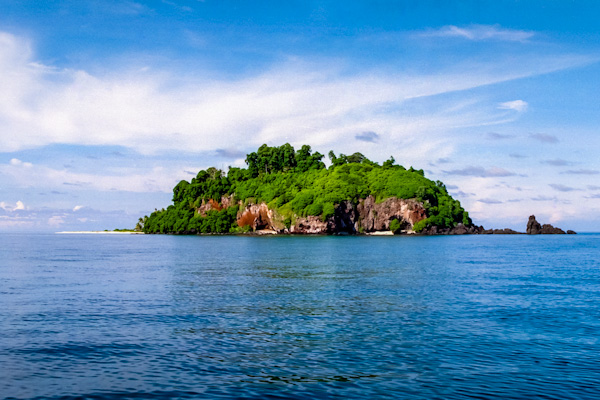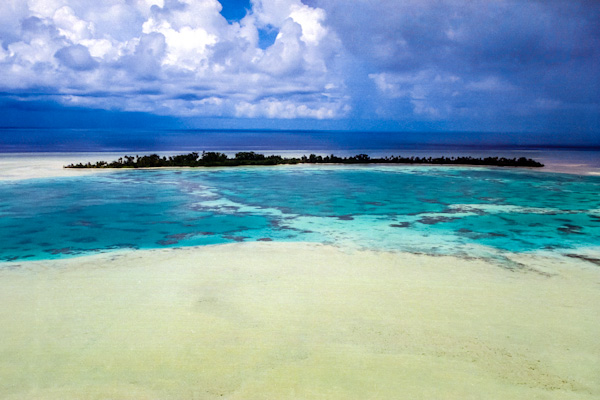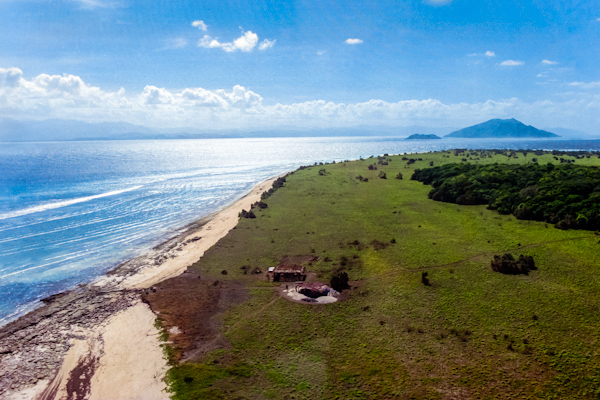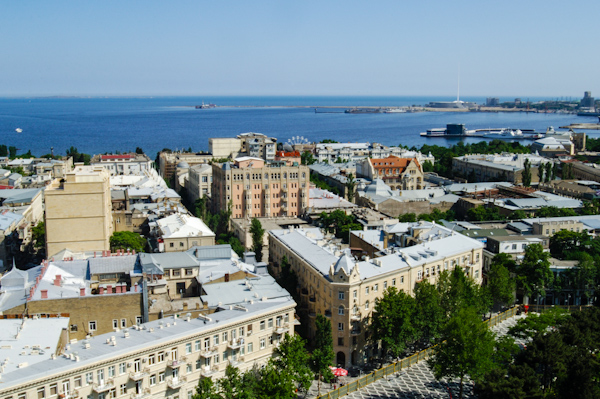The transition from Sukarno’s Guided Democracy to Suharto’s New Order reflected a realignment of the country’s political forces. The left had been bloodied and driven from the political stage, and Suharto was determined to ensure that the PKI would never reemerge as a challenge to his authority. Powerful new intelligence bodies were established in the wake of the coup: the Operational Command for the Restoration of Security and Order (Kopkamtib) and the State Intelligence Coordination Agency (Bakin).

The PKI had been crushed on the leadership and cadre levels, but an underground movement remained in the villages of parts of Java that was methodically and ruthlessly uprooted by the end of 1968. Around 200,000 persons were detained by the military after the coup: these were divided into three categories depending on their involvement. The most active, Group A, those “directly involved” in the revolt, were sentenced by military courts to death or long terms in prison; Group B, less actively involved, were in many cases sent to prison colonies, such on Buru Island in the Malukus, where they remained under detention, in some cases until 1980; Group C detainees, mostly members of the PKI peasant organization, were generally released from custody.
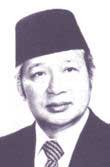
As late as 1990, four persons were executed for involvement in the coup. Although the delay was explained as due to the length of the judicial appeals process, many observers believed that Suharto wanted to show that the passage of years had not softened his attitude toward communism. Communists aside, Suharto generally dealt with opposition or potential opposition with a blend of cooptation and nonlethal repression. According to political scientist Harold A. Crouch, Suharto’s operating principle was the old Javanese dictum of alon alon asal kelakon, or “slow but sure.” Thus, he gradually asserted control over ABRI, weeding out pro-Sukarno officers and replacing them with men on whom he could depend. The army was placed in a superior position in relation to the other services in terms of budgets, personnel, and equipment. Nasution, Indonesia’s most senior general, was gently pushed aside after he left the post of minister of defense and security to become chairman of the DPR in early 1966. Although he later retired from public life, Nasution remained a potential rival to Suharto although he never publicly spoke out or exploited his favorable popular image.
Like Sukarno’s Guided Democracy, the New Order under Suharto was authoritarian. There was no return to the relatively unfettered party politics of the 1950-57 period. In the decades after 1966, Suharto’s regime evolved into a steeply hierarchical affair, characterized by tight centralized control and long-term personal rule. At the top of the hierarchy was Suharto himself, making important policy decisions and carefully balancing competing interests in a society that was, despite strong centralized rule, still extremely diverse. Arrayed below him was a bureaucratic state in which ABRI played the central role. Formally, the armed forces’ place in society was defined in terms of the concept of dwifungsi. Unlike other regimes in Southeast Asia, such as Thailand or Burma, where military regimes promised an eventual (if long-postponed) transition to civilian rule, the military’s dual political-social function was considered to be a permanent feature of Indonesian nationhood. Its personnel played a pivotal role not only in the highest ranks of the government and civil service but also on the regional and local levels, where they limited the power of civilian officials. The armed forces also played a disproportionate role in the national economy through militarymanaged enterprises or those with substantial military interests.

Although opposition movements and popular unrest were not entirely eliminated, Suharto’s regime was extraordinarily stable compared with its predecessor. His success in governing the world’s fourth most populous and, after India, ethnically most diverse nation is attributable to two factors: the military’s absolute or near-absolute loyalty to the regime and the military’s extensive political and administrative powers. In the mid-1980s, approximately 85 percent of senior officers were Javanese (although the percentage was declining). Suharto wisely averted a problem of many military regimes: the monopolization of the higher ranks by senior military officers who frustrate the aspirations of their juniors. In 1985 he ordered an extensive reorganization of the officer corps in which the Generation of 1945, who had taken part in the National Revolution, was largely retired, the younger generation promoted into command positions, and an extensive reorganization accomplished in order to promote efficiency.
Other factors in stability include the establishment of a large number of corporatist-style organizations to link social groups in a subordinate relationship with the regime. These included organizations of a social, class, religious, and professional nature. Rather than imposing cultural and ideological homogeneity– a virtually impossible task given the society’s diversity–Suharto revived the Sukarno-era concept of Pancasila. Suharto’s approach to political conflict did not reject the use of coercion but supplemented it with a rhetoric of “consultation and consensus,” which, like Pancasila, had its roots in the Sukarno and Japanese eras.
The State and Economic Development
Apart from rejection of leftism, probably the single greatest discontinuity between the Sukarno and Suharto eras was economic policy. Sukarno abused Indonesia’s economy, undertaking ambitious building projects, nationalizing foreign enterprises, and refusing to undertake austerity measures recommended by foreign donors, because such measures would have weakened his support among the masses. Suharto also used the economy for political ends, but initiated a generally orderly process of development supported by large infusions of foreign aid and investment.
Debt service obligations in 1966 exceeded export earnings, and total foreign debt was US$2.3 billion. One billion dollars of this amount was owed to the Soviet Union and its East European allies, largely for arms purchases. The following year, talks were initiated with Western and Japanese creditors for aid and new lines of credit. An informal group of major Western nations, Japan, and multilateral aid agencies such as the World Bank*, known as the Inter-Governmental Group on Indonesia (IGGI*), was organized to coordinate aid programs. Chaired by the Netherlands, IGGI gained tremendous, and sometimes resented, influence over the nation’s economic policymaking
. Hand-in-hand with aid donors, a new generation of foreign-educated technocrats– economic planners attached principally to the National Development Planning Council (Bappenas) led by Professor Widjojo Nitisastro– designed and implemented a series of five-year plans. The first plan, Repelita I*, which occurred in fiscal year (FY*) 1969-73, stressed increased production of staple foods and infrastructure development; Repelita II (FY 1974-78) focused on agriculture, employment, and regionally equitable development; Repelita III (FY 1979-83) emphasized development of agriculture-related and other industry; Repelita IV (FY 1984-88) concentrated on basic industries; and Repelita V (FY 1989-93) targeted transport and communications. During the 1980s, these plans also provided a greater role for private capital in industrialization.
Helped substantially by oil revenues after the quadrupling of prices during the 1973 global “oil shock,” Indonesia emerged from pauperdom to modest prosperity. The development of new, high-yield varieties of rice and government incentive programs enabled the nation to become largely self-sufficient in this staple crop. In most areas of the archipelago, standards of nutrition and public health improved substantially.
Oil revenues were vital for the Suharto regime because they provided it with resources to compensate groups whose cooperation was essential for political stability. Government projects and programs expanded impressively. Indonesia is a member of the Organization of the Petroleum Exporting Countries (OPEC*). Reflecting OPEC’s pricing policies, the state’s income from oil, channelled through the state-owned enterprise Pertamina (the National Oil and Natural Gas Mining Company), increased 4,000 percent between the FY 1968 and FY 1985. Economic planners realized, however, the danger of depending excessively on this single source of export revenue, particularly when crude oil prices declined during the mid- and late 1980s. As a result, the export not only of manufactured goods but also of non-oil raw and semiprocessed materials such as plywood and forest products was promoted. But the oil boom also provided new opportunities for corruption. Pertamina was established in 1968 as a merger of Permina and two other firms. Its director, General Ibnu Sutowo, a hardy survivor of the transition from Guided Democracy to New Order who had been director of Permina, embarked on an ambitious investment program that included purchase of oil tankers and construction of P.T. Krakatau, a steel complex. In the mid-1970s, however, it was discovered that he had brought the firm to the brink of bankruptcy and accrued a debt totaling US$10 billion. In 1976 he was forced to resign, but his activities had severely damaged the credibility of Indonesian economic policy in the eyes of foreign creditors.
The Pertamina affair revealed the problems of what Australian economist Richard Robison, in a 1978 article, called Indonesia’s system of “bureaucratic capitalism”: a system based on “patrimonial bureaucratic authority” in which powerful public figures, especially in the military, gained control of potentially lucrative offices and used them as personal fiefs or appanages, almost in the style of precolonial Javanese rulers, not only to build private economic empires but also to consolidate and enhance their political power. Because Indonesia lacked an indigenous class of entrepreneurs, large-scale enterprises were organized either through the action of the state (Pertamina, for example), by ethnic Chinese capitalists (known in Indonesia as cukong), or, quite often, a cooperative relationship of the two.

Through the 1970s and 1980s, Indonesia’s pervasive corruption became a political issue that the New Order state could not entirely muffle. In January 1974, the visit of Japanese prime minister Tanaka Kakuei sparked rioting by students and urban poor in Jakarta. Ostensibly fueled by resentment of Japanese exploitation of Indonesia’s economy, the so-called “Malari Affair” also expressed popular resentment against bureaucratic capitalists and their cukong associates. During the 1980s, the ties between Suharto and Chinese entrepreneur Liem Sioe Liong, one of the world’s richest men, generated considerable controversy. The Liem business conglomerate was in a favored position to win lucrative government contracts at the expense of competitors lacking presidential ties. Import licenses were another generator of profits for well-connected businessmen. The licensing system had been established to reduce dependence on imports, but in fact it created a high-priced, protected sub-economy that amply rewarded license holders but reduced economic efficiency. By 1986 licenses were required for as many as 1,500 items. Foreign journals also published reports concerning the rapidly growing business interests of Suharto’s children.
The Pancasila and Political Parties
Suharto’s regime transformed and marginalized political parties, which, minus the PKI, still retained considerable popular support in the late 1960s. Party influence was diminished by limiting the parties’ role in newly established legislative bodies, the DPR and the MPR, about 20 percent of whose members were appointed by the government. Parties were forced to amalgamate: in January 1973, four Islamic parties were obliged to establish a single body known as the Unity Development Party (PPP) and nonIslamic parties, including the PNI, were obliged to merge into the Indonesian Democratic Party (PDI). Established by the armed forces in 1964, the Joint Secretariat of Functional Groups (Golkar) was given a central role in rallying popular support for the New Order in carefully staged national legislative elections.
Designed to bring diverse social groups into a harmonious organization based on “consensus,” by 1969 Golkar had a membership of some 270 associations representing civil servants, workers, students, women, intellectuals, and other groups. Backed both financially and organizationally by the government, it had mastered Indonesia’s political stage so completely by the 1970s that speculation centered not on whether it would gain a legislative majority, but on how large that majority would be and how the minority opposition vote would be divided between the PPP and the PDI. In the general elections of 1971, 1977, and 1982, Golkar won 62.8, 62.1, and 64.3 percent of the popular vote, respectively. As the 1980s progressed, Golkar continued to consolidate its electoral dominance.
In 1985 the legislature passed government-backed bills requiring all political parties and associations to declare their support for the Pancasila as their ideological foundation. Declaring such support was an extremely delicate issue for Muslim groups, including the PPP, since it attacked the basis of their identity (the government demanded that the Muslim parties not be exclusive and allow non-Muslim memberships). Although the Pancasila includes the principle of belief in a “supreme being,” use of the term Maha Esa, rather than Allah, was designed to encompass diverse religious groups: Christians, Hindus, and Buddhists as well as Muslims. The Pancasila policy aroused strong opposition among politically active Muslims. Riots broke out in the Tanjung Priok port area of Jakarta on September 12, 1984, and a wave of bombings and arson took place in 1985. Targets included the Borobudur Buddhist temple, the palace of the Sunan of Surakarta, commercial districts in Jakarta, and the headquarters of the Indonesian state radio.
Voices of democratic opposition were heard May 5, 1980, when a group called the Petition of Fifty, composed of former generals, political leaders, academicians, students, and others, called for greater political freedom. In 1984 the group accused Suharto of attempting to establish a one-party state through his Pancasila policy. In the wake of the 1984-85 violence, one of the Petition of Fifty’s leaders, Lieutenant General H.R. Dharsono, who had served as secretary general of ASEAN, was put on trial for antigovernment activities and sentenced to a ten-year jail term (from which he was released in 1990).
Territorial Continuity: Irian Jaya and East Timor
A connection between the Sukarno and Suharto eras was the ambition to build a unitary state whose territories would extend “from Sabang [an island northwest of Sumatra, also known as Pulau We] to Merauke [a town in southeastern Irian Jaya].” Although territorial claims against Malaysia were dropped in 1966, the western half of the island of New Guinea and East Timor, formerly Portuguese Timor, were incorporated into the republic. This expansion, however, stirred international criticism, particularly from Australia.
West New Guinea, as Irian Jaya was then known, had been brought under Indonesian administration on May 1, 1963 following a ceasefive between Indonesian and Dutch forces and a seven-months UN administration of the former Dutch colony. A plebiscite to determine the final political status of the territory was promised by 1969. But local resistance to Indonesian rule, in part the result of abuses by government officials, led to the organization of the Free Papua Movement (OPM) headed by local leaders and prominent exiles such as Nicholas Jouwe, a Papuan who had been vice chairman of the Dutch-sponsored New Guinea Council. Indonesian forces carried out pacification of local areas, especially in the central highland region where resistance was particularly stubborn.
Although Sukarno had asserted that a plebiscite was unnecessary, acceding to international pressure, he agreed to hold it. The Act of Free Choice provisions, however, had not defined precisely how a plebiscite would be implemented. Rather than working from the principle of one man-one vote, Indonesian authorities initiated a consensus-building process that supposedly was more in conformity with local traditions. During the summer of 1969, local councils were strongly pressured to approve unanimously incorporation into Indonesia. The UN General Assembly approved the outcome of the plebiscite in November, and West Irian (or Irian Barat), renamed Irian Jaya, became Indonesia’s twenty-sixth province. But resistance to Indonesian rule by the OPM, which advocated the unification of Irian Jaya and the neighboring state of Papua New Guinea, continued. Border incidents were frequent as small bands of OPM guerrillas sought sanctuary on Papua New Guinea territory.
East Timor and the small enclave of Oecusse on the north coast of the island of Timor were poor and neglected corners of Portugal’s overseas empire when officers of Portugal’s Armed Forces Movement, led by General António de Spínola, seized power in Lisbon in April 1974. Convinced that his country’s continued occupation of overseas territories, especially in Africa, was excessively costly and ultimately futile, Spínola initiated a hasty “decolonization” process. In Portuguese Timor, local political groups responded: the Timor Democratic Union (UDT) favored a continued association with Lisbon, the Revolutionary Front for an Independent East Timor (Fretilin*), demanded full independence, and the Popular Democratic Association of Timor (Apodeti) favored integration with Indonesia.
Although Indonesia’s minister of foreign affairs, Adam Malik, assured Portugal’s foreign minister on his visit to Jakarta that Indonesia would adhere to the principle of self-determination for all peoples, attitudes had apparently changed by the summer of 1974. Fretilin’s leftist rhetoric was disquieting, and Jakarta began actively supporting Fretilin’s opponent, Apodeti. Fears grew that an independent East Timor under Fretilin could become a beachhead for communist subversion. At a meeting between Suharto and Australian prime minister Gough Whitlam in September 1974, the latter acknowledged that it might be best for East Timor to join Indonesia but that the Australian public would not stand for the use of force. This acknowledgment seemed to open the way for a more forward policy. External factors relating to the communist subversion theme were the conquest of South Vietnam by communist North Vietnam in May 1975 and the possibility of a Chinese takeover of the Portuguese colony of Macao.
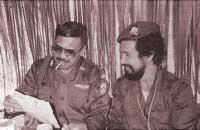
Fretilin had become the dominant political force inside East Timor by mid-1975, and its troops seized the bulk of the colonial armory as the Portuguese hastened to disengage themselves from the territory. An abortive coup d’état by UDT supporters on August 10, 1975, led to a civil war between Fretilin and an anticommunist coalition of UDT and Apodeti. Fretilin occupied most of the territory by September, causing Jakarta to give the UDT and Apodeti clandestine military support. On November 25, 1975, Fretilin proclaimed the Democratic Republic of East Timor. Jakarta responded immediately. On December 7, Indonesian “volunteer” forces landed at Dili, the capital, and Baukau. By April 1976, there were an estimated 30,000 to 35,000 Indonesian troops in the territory. On July 15, 1976, East Timor was made Indonesia’s twenty-seventh province: Timor Timur.
Indonesian troops carried out a harsh campaign of pacification that inflicted grave suffering on local populations. Through the late 1970s and 1980s, accounts of military repression, mass starvation, and disease focused international attention on Indonesia as a major violator of human rights. An undetermined number–from 100,000 to 250,000–of East Timor’s approximately 650,000 inhabitants died as a result of the armed occupation. However, by the mid-1980s, most of the armed members of Fretilin had been defeated, and in 1989 the province was declared open to free domestic and foreign travel.
Foreign Policy under Suharto
Indonesia’s foreign relations after 1966 can be characterized as generally moderate, inclined toward the West, and regionally focused. As a founding member of the Nonaligned Movement* in 1961, Indonesia pursued a foreign policy that in principle kept it equidistant from the contentious Soviet Union and the United States. It was, however, dependent upon Japan, the United States, and West European countries for vital infusions of official development assistance and private investment. Jakarta’s perceptions that China had intervened substantially in its internal affairs by supporting the PKI in the mid-1960s made the government far less willing to improve relations with Beijing than were other members of ASEAN. Although Indonesia differed with its ASEAN counterparts over the appropriate response to the Cambodian crisis after the Vietnamese invasion of that country in 1978, its active role in promoting a negotiated end to the Cambodian civil war through the Jakarta Informal Meetings in 1988 and 1989 reflected a new sense of confidence. Policy makers believed that since the country had largely achieved national unity and was making ample progress in economic development, it could afford to devote more of its attention to important regional issues.
Given Indonesia’s strategic location at the eastern entrance to the Indian Ocean, including command of the Malacca and Sunda straits, the country has been viewed as vital to the Asian security interests of the United States and its allies. Washington extended generous amounts of military aid and became the principal supplier of equipment to the Indonesian armed forces. Because of its nonaligned foreign policy, Jakarta did not have a formal military alliance with the United States but benefited indirectly from United States security arrangements with other states in the region, such as Australia and the Philippines. The New Order’s political repressiveness and its pacification of East Timor, however, were criticized directly and indirectly by some United States officials, who in the late 1980s began calling for greater openness.
In terms of international economics, Indonesia’s most important bilateral relationship was with Japan. During the 1970s, it was the largest recipient of Japanese official development assistance and vied with China for that distinction during the 1980s. Tokyo’s aid priorities included export promotion, establishment of an infrastructure base for private foreign investment, and the need to secure stable sources of raw materials, especially oil but also aluminum and forest products. Jakarta depended on aid funds from Tokyo to build needed development projects. This symbiotic relationship, however, was not without its tensions. Indonesian policy makers questioned the high percentage of Japanese aid funds in the form of loans rather than grants and the heavy burden of repaying yen-denominated loans in the wake of the appreciation of the Japanese currency in 1985. Although wartime memories of the Japanese occupation were in general not as bitter as in countries such as the Philippines, Malaysia, and China, there was some concern about the possibility of Japanese remilitarization should United States forces be withdrawn from the region. In the context of Indonesia’s long history, the forces bringing about greater integration with the international community while creating political and economic tensions at home were not unexpected. Historians of the twenty-first century are likely to find remarkably similar parallels with earlier periods in Indonesia history.
*World Bank
Informal name used to designate a group of four affiliated international institutions: the International Bank for Reconstruction and Development (IBRD), the International Development Association (IDA), the International Finance Corporation (IFC), and the Multilateral Investment Guarantee Agency (MIGA). The IBRD, established in 1945, has the primary purpose of providing loans at market-related rates of interest to developing countries at more advanced stages of development. The IDA, a legally separate loan fund but administered by the staff of the IBRD, was set up in 1960 to furnish credits to the poorest developing countries on much easier terms than those of conventional IBRD loans. The IFC, founded in 1956, supplements the activities of the IBRD through loans and assistance designed specifically to encourage the growth of productive private enterprises in the less developed countries. The MIGA, founded in 1988, insures private foreign investment in developing countries against various noncommercial risks. The president and certain officers of the IBRD hold the same positions in the IFC. The four institutions are owned by the governments of the countries that subscribe their capital. To participate in the World Bank group, member states must first belong to the International Monetary Fund (q.v.).
*Inter-Governmental Group on Indonesia (IGGI)
An international group of lenders established in 1967 by the Netherlands to coordinate multilateral aid to Indonesia. The other members included the Asian Development Bank, International Monetary Fund (q.v.), United Nations Development Programme, World Bank (q.v.), Australia, Belgium, Britain, Canada, France, Germany, Italy, Japan, New Zealand, Switzerland, and the United States. In March 1992, Indonesia announced that it was rejecting further IGGI aid as long as the Netherlands chaired the organization. IGGI was replaced by the Consultative Group on Indonesia (q.v.).
*Repelita (Rencana Pembangunan Lima Tahun)
A five-year economic development plan: Repelita I (FY 1969- 73), Repelita II (FY 1974-78), Repelita III (FY 1979-83), Repelita IV (FY 1984-88), and Repelita V (FY 1989-93).
*fiscal year (FY)
April 1 to March 31.
*Organization of the Petroleum Exporting Countries (OPEC)
Founded in Baghdad, Iraq, on September 14, 1960, the organization aims to coordinate petroleum policies of its member countries: Algeria, Ecuador, Gabon, Indonesia, Iran, Iraq, Kuwait, Libya, Nigeria, Qatar, Saudi Arabia, United Arab Emirates, and Venezuela. Indonesia joined OPEC in 1962.
*Fretilin
Revolutionary Front for an Independent East Timor (Frente Revolucionária do Timor Leste Independente); a guerrilla movement seeking the independence of East Timor. Fretilin was established in 1974.
*Nonaligned Movement
Established in September 1961 with the aim of promoting political and military cooperation apart from the traditional East and West blocs. Indonesia was among the original members; as of 1992, there were 101 members, 9 observers, and 12 “guests.” Indonesia was elected to chair the Nonaligned Movement from 1992 to 1995.
Data as of November 1992

